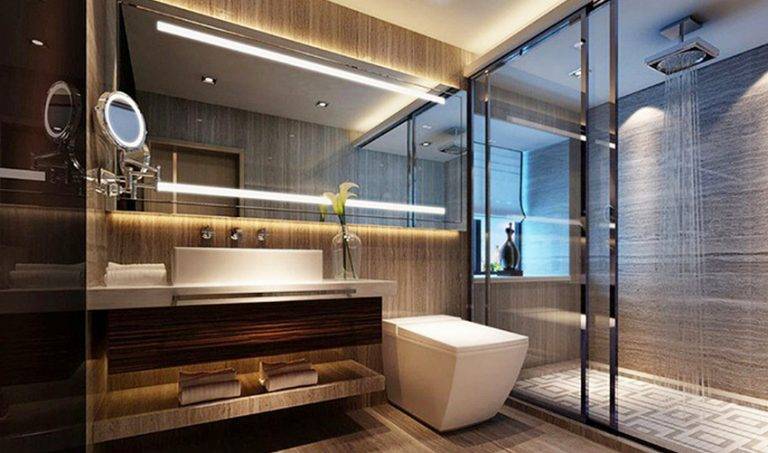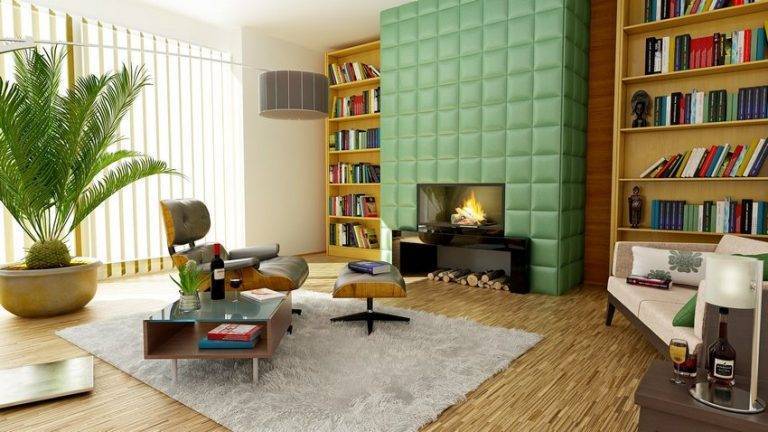Meal times are family time, when everyone gets together to talk about their day. It is often the only time when the entire family comes together to share memorable moments. This makes the dining experience more of a social event.
A well-designed interior design dining room is conducive to long conversations; a place to relax and rejuvenate the senses, with a warm and inviting ambiance.
Utilizing Your Dining Room
So how do we decide what type of a dining space we need in our houses?
Firstly, discerning clients realize that dining rooms are much more than just a place to eat; an effective interior design dining room involves all of our senses, making the pleasure of eating an emotional, social and culinary journey.
How does this concept manifest in actual design solutions?
Purpose Of Your Interior Design Dining Room
How you envision your dining space is largely based on your lifestyle choices. Do you love throwing lavish parties or are you more of a family person who enjoys casual entertaining? Which meal is the most important one of the day for your family?
Breakfast is often loud and chatty, when everyone is in a hurry to start off their busy day. Lunch is usually a quieter affair as most of the family is out at work or school. Dinner is often the most important meal of the day when the family regroups at the dinner table.
Design your dining room as a versatile space that can be used for different purposes.
Family Interior Design Dining Room
These serve as casual dining spaces and are primarily used by family and close friends. They can be cheery and fun or subdued, depending on personal preference. Family style dining rooms are typically used for daily dinners and more often during weekends and holidays.
Breakfast Cum Dining Room
These are often used by the family at multiple times of the day. Breakfast cum dining rooms are perfect for a quick breakfast, a quiet lunch, or even a midnight snack. They are ideal for when you don’t want to bother laying the table for just one person.
Dining For Entertainment
This is the Mercedes of dining rooms, designed to impress guests and visitors.
An interior design dining room that is designed primarily to entertain guests is rarely used for everyday dining.
Its primary purpose is to provide a ‘wow’ factor. Thus, attention to detail and pre-planning dominate design decisions.
Location Location Location!
The answer to the all important question of location, is determined by function. Once you know the purpose of your dining room, you can decide where to locate it.
Does it need to be its own separate space, a part of the kitchen or a part of the living room?
You can even design it as an open dining space that connects the kitchen to the living area.
Deciding On Location
Deciding on how to integrate your interior design dining room into the house design is not a one-size-fits-all solution. Every home is unique, as are the requirements of individual homeowners.
It is important to understand how you entertain (casual get-togethers or lavish parties). You may also consider how frequently you entertain and the number of guests.
Separate Dining Rooms
Clients who entertain regularly, prefer to have a separate dining room, away from the living room. It is often conveniently located close to the kitchen for easy service.
Such dining spaces are designed formally. They usually feature a large 10-12 seater dining table, a service counter and a sideboard for cutlery and crockery.
Make sure to allow for flexibility to bring in more chairs for larger numbers of guests. You can even have a bar counter incorporated into the dining room.
Locate formal dining rooms close to a guest bathroom. They may sometimes open up onto porches or gardens for spill-over parties. Dedicated dining rooms are usually compact at 4m x 6m or 5m x 7m in size.
Dining Rooms Integrated Into A Living Room
For clients who live in modest homes, or are just not into throwing big bashes, integrated living-cum-dining rooms are the way to go.
More informal than segregated dining rooms, these spaces are ideal for smaller parties. They make guests feel more included than if they were sitting in a separate living room.
Dining Rooms Integrated Into A Kitchen
An increasing number of clients are opting to forego formal dining rooms in favor of expanded breakfast nooks. These also serve as informal dining areas.
The dining area becomes a part of the kitchen and may include a casual seating nook, a television or window seat. Family members can spend time together while cooking.
Design your kitchen-cum-dining room with a large window to let in natural light and take advantage of any good views. You can also use French doors that open out onto a garden.
Kitchen-cum-dining rooms are cozy and inviting, and are often the most used room in the house.
Open-Plan Dining Rooms
Open-plan dining rooms connect the kitchen and living areas into one large multi-functional space. They are best suited for casual entertaining.
Open plan dining spaces encourage greater communication between the different parts of the home. Family and guests may be sitting in the living area and can still talk to the person in the kitchen.
It also enables parents to keep an eye on children without interrupting their daily activities.
You can also use your open-plan interior design dining room for small formal parties; just choose the right place settings and table decor to jazz up a casual dining space.
Open plan dining offers more flexibility, allowing the kitchen to be used for cooking, entertaining, and socializing.
Multiple Dining Rooms
In large homes, many families like to make the best of both worlds by having formal and informal dining spaces. In Dubai, it is common to invite extended family for meals. Having separate formal and casual dining spaces allows the host to pre-plan the event, whether it’s dinner for family or a larger party for guests.
Fundamentals Of Interior Design Dining Room Decor
It is really important for homeowners to communicate their personal style through their dining room design.
By all means, select trendy decor accents, but also include personally curated items such as place settings and accessories.
This gives homeowners a sense of pride and confidence when entertaining friends or family, so they can continue to celebrate their home and make wonderful memories.
The Table
The table is the centerpiece of any dining room. Choose your dining table based on the style of your dining space.
Opt for a rustic sleeper wood table for a more informal look. Alternately, you may prefer a monochromatic table for more formal dining. Contemporary tables combine a mix of materials for a chic and stylish look.
When choosing a table, you may consider thinking about its functionality – how easy is it to clean on a daily basis? Rustic wooden tables are charming, but can be very difficult to keep clean. Marble, glass or lacquered table tops, on the other hand, are much easier to clean.
The dining table is more than just a surface to eat on; it may be used for dining, as a work surface or as storage.
For very large parties, you may even use it as a buffet table to lay out food. When not used for eating, a chic dining table becomes a piece of art, so choosing the right one is crucial. You can find a variety of tables to suit most styles here.
The size of the dining table is essential to comfortable dining and depends on the size of the family. Large dining tables for seating 10-12 people are typically 3m x 1m in size.
Seating
When planning a party, you need to plan for adequate seating, especially for larger parties.
Use the right style of chairs to dress up a dining room. Opt for different styles; you can mix and match different seating for an eclectic vibe and for greater flexibility.
Pair a bench with dining chairs; you can even mix sofa chairs, ottomans and dining chairs to cater to your guests’ comfort.
Think about the upholstery as well. Bold prints and bright colors can be fun and refreshing, emphasizing a more casual vibe.
Alternatively, subdued grey or earthy colors are more formal looking. Mix and match textures and materials for greater balance or to make a bold statement!
Space Planning And Storage
A cramped or cluttered dining room is not conducive to enjoyable dining. Ensure that there is enough space to move around the dining table and also between dining chairs and the wall.
You can use a sideboard to hide away cutlery. This will ensure that there is a space to put things out of sight when they are not needed. This is especially true for homes with compact kitchens that have limited storage.
For formal dining areas, you want to avoid carrying delicate dining items back and forth from the kitchen, so sideboards are a good solution. Decorative dining accessories can also be displayed on walls as a feature.
Walls
Put dining room walls to good use. Spruce up a family dining area with a fun wall paper print or create soft mood lighting with fragrant candles on the walls.
These serve the dual purpose of masking food odors as well as creating a relaxing ambiance.
Mirrors can create a sense of drama in a dining room by becoming a focal point. Don’t be afraid to play around with scale; an oversized mirror can be an eye-catching element, transforming the design of the dining space.
Wall-to-wall mirrors can visually extend dining spaces by making them look much bigger than they actually are.
Paintings are a great addition to a dining room wall and immediately draw the eye. They can match the decor of the space by picking up on accent colors.
For added interest, incorporate a contrasting painting style; a vintage painting with an ornate frame can shake things up in a contemporary styled dining area.
Outdoor Connection
A dining room or nook can be designed to open up onto an outdoor patio or garden. Use repeated decor accents such as cushion cover prints or similarly styled table-top accessories in your outdoor space. This unifies the indoor and outdoor space.
Flooring
Flooring has greatly evolved over the past decade to become a decorative element on its own.
Carpets for dining tables are very common for this reason. In homes with elderly residents or small children, it can become impossible to keep the carpet clean, making it an impractical design choice.
An alternate method to give the illusion of a carpet, is to use patterned ‘tiles’ with a border; the border serves as an edging to distinguish this from flooring used in the rest of the space.
Invoking A Mood For Dining
Lighting and music can greatly enhance your dining experience and tie different spaces in your home together.
You should think about these aspects during the design stage and not as an afterthought. This allows you to conceal wiring and place switches in discrete locations. You can also locate speakers accurately for optimum sound.
A mix of direct and indirect lighting works well to set different moods.
A bespoke pendant light or chandelier works well for formal spaces. You can also conceal lighting in a recessed ceiling and combine this with spot lights for more focused lighting.
Bright lights create more energy within a room, whereas dimmed lighting is softer and invokes a feeling of calm and relaxation.
It’s All In The Details!
What are the elements of an interior design dining room that give it a warm and welcoming ambiance? Below we look at some of these and how to use them effectively to create a desired mood.










